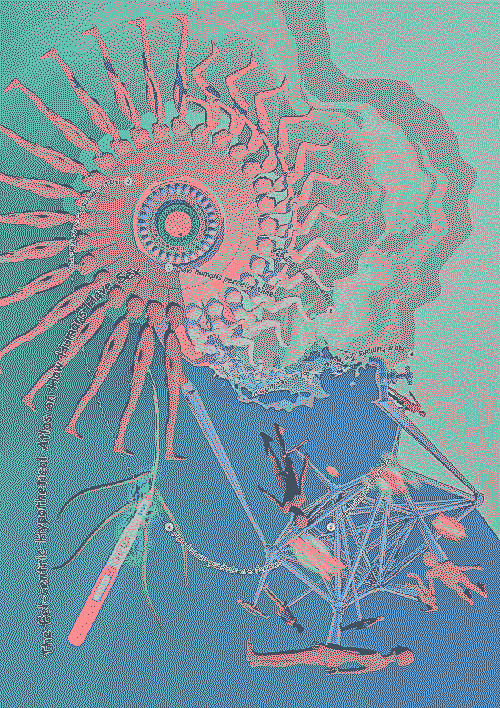"The hypothetical eel-centric atlas on how humans have sex" is a publication exploring how an eel imagines the sexual intercourses of humans. The premise here was that eels don't know what human genitals are like, considering that it was only after the 20th century that humans discovered the genitals of eels. However, the ocean that they live in is full of human-made objects and debris, so I assumed that would be the primary source of information for eels to research humans. So eels used these found object to reconstruct the human world in their cognitive space, forming their answers to every question related to the reproduction of humans, such as How humans perceive time, How humans migrate, How humans become mature, How human genitals are formed, How humans have sex, How humans are born.
According to the research of an eel, humans travel through a circular path throughout their life. Their skin gets darker as they grow old, rely on a contraceptive pill container as a time system, urinate on a pregnancy test to see if they're mature enough for having sex, Build an infrastructure for huge group sex consisting of pipes with water propagating sperms and eggs, and everyone dies after having the intercourse. Newborn humans are born from the spawning water, and released from the irrigation system through a faucet.
If eels communicate this knowledge to humans, it's very unlikely to happen in a literal way. What we share in common with eels is that the biggest part of our brain cortex is dedicated to vision. It is logical that this publication should narrate the eel-knowledge in a visual way. So it is in the form of a cognitive map that illustrates what the reproductive cycle of a human is like and how the objects that are found by eels play roles in this. And a book here describes that cycle in detail, also by using images primarily. The book has a circular structure without page numbers and apparent beginning and end when it's unfolded as a representation of the perspective of eels formed by iterative life cycles.

💧Noam Youngrak Son
💧More-than-Human Communication
💧How it started